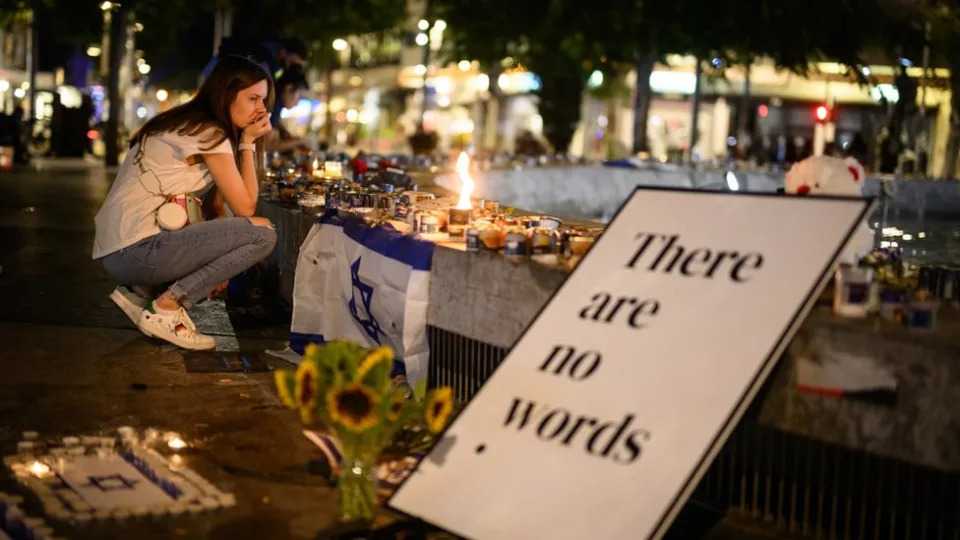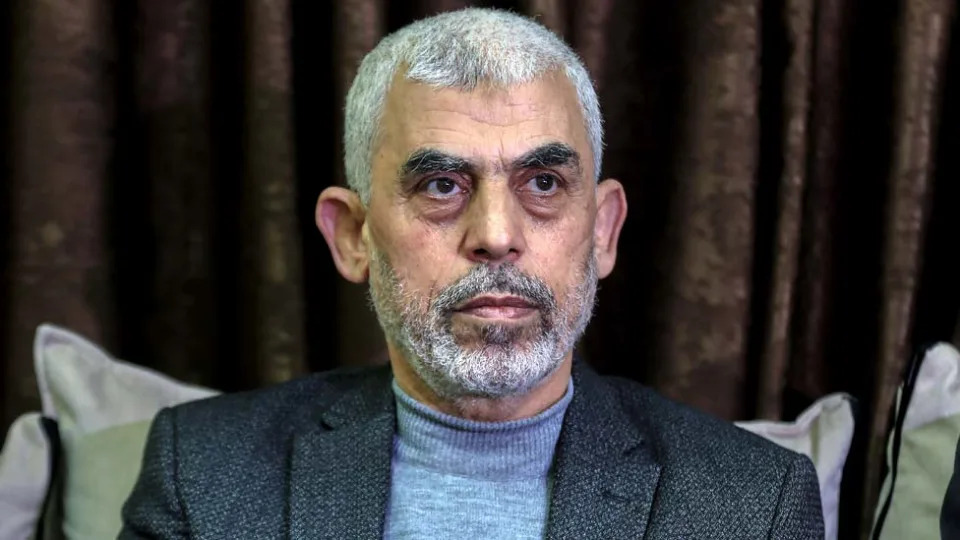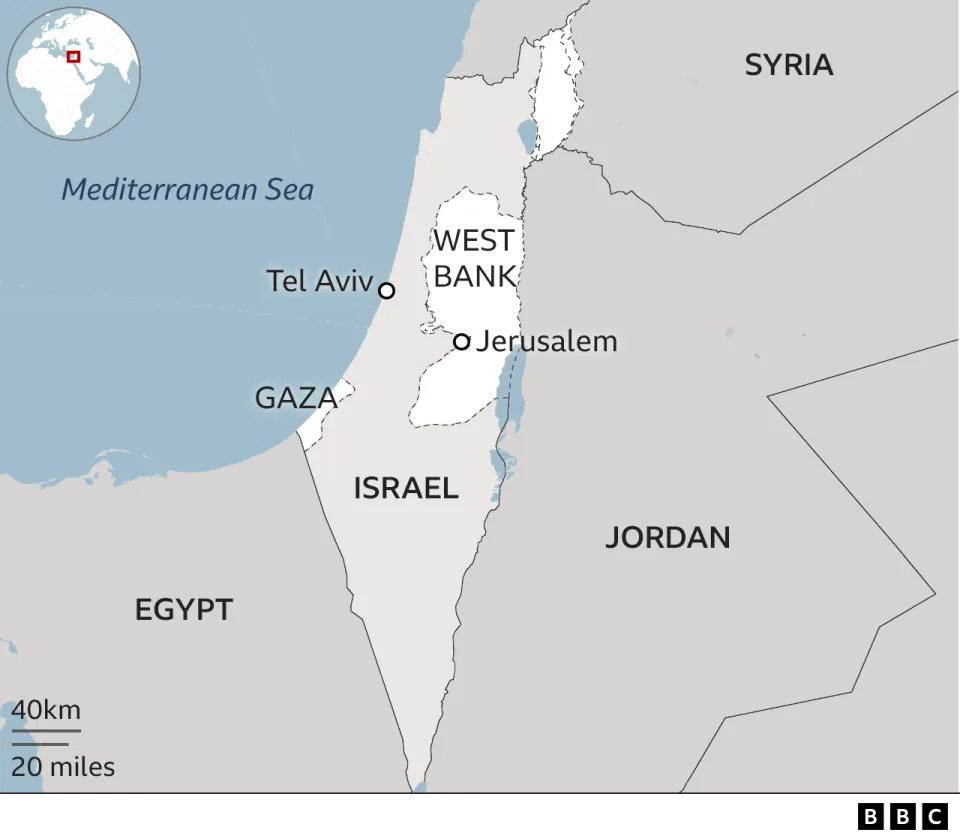In this space we do the talking, about what the Daily News deems important and worthy. But today we are giving a good chunk of our space to Secretary of State Tony Blinken. America’s top diplomat gave his year-end press conference Wednesday before he left for another trip to the Mideast for the Israel-Hamas war that the terror gang launched from Gaza on Oct. 7.
Meanwhile, here on the East Side, the United Nations Security Council postponed yet again a vote on an United Arab Emirates-drafted resolution calling for a pause in the fighting to bring in aid to Gaza and allow for the hostages kidnaped by Hamas to be released.
The Monday vote became the Tuesday vote became the Wednesday vote and is now the Thursday vote because the U.S. is rightly insisting that Hamas be named as instigators of this awful war that has killed Israelis and Palestinians. Great credit to Blinken and President Joe Biden for demanding that the Security Council must call a terrorist a terrorist.
Here is Blinken: “We’ve talked about Israel and Gaza. Let me just say this. We believe that, as we’ve said from the outset, Israel has not only a right but an obligation to defend itself and to try to make sure that Oct. 7 never happens again. Any other country in the world faced with what Israel suffered on Oct. 7 would do the same thing.
“We’ve also said — and we’ve been very clear — that how Israel does it matters and matters tremendously. And there, too, we’ve been very deeply engaged with them to maximize protections for civilians, to maximize humanitarian assistance, to minimize harm to people in Gaza.
“One of the things that’s striking to me is that, understandably, everyone would like to see this conflict end as quickly as possible, but if it ends with Hamas remaining in place and having the capacity and the stated intent to repeat Oct. 7 again and again and again, that’s not in the interests of Israel, it’s not in the interests of the region, it’s not in the interests of the world.
“And what is striking to me is that even as, again, we hear many countries urging the end to this conflict, which we would all like to see, I hear virtually no one saying — demanding of Hamas that it stop hiding behind civilians, that it lay down its arms, that it surrender. This is over tomorrow if Hamas does that.
“This would have been over a month ago, six weeks ago, if Hamas had done that. And how could it — how can it be that there are no demands made of the aggressor and only demands made of the victim?
“So it would be good if there was a strong international voice pressing Hamas to do what’s necessary to end this. And again, that could be tomorrow.
“And again, I come back to this basic proposition. There seems to be silence on what Hamas could do, should do, must do if we want to end the suffering of innocent men, women, and children. It would be, I think, good if the world could unite around that proposition as well.”
Well said, Mr. Secretary.
Talks on Gaza cease-fire and freeing more hostages as Hamas leader is in Egypt.
Talks on Gaza cease-fire and freeing more hostages as Hamas leader is in Egypt.
Hamas said that Haniyeh, who is believed to be based in Qatar, would discuss the war with Egyptian officials, without providing more details.
At the U.N. Security Council, diplomats are negotiating for the third day on a resolution to pause the fighting and allow desperately needed humanitarian aid deliveries.
The United Nations Security Council is trying to avoid another veto by the United States, the U.N. Security Council postponed voting for the second day in a row on an Arab-sponsored resolution that would deliver humanitarian aid to Gaza during some form of halt in the fighting.
Security Council members remained in intense negotiations Tuesday, as the United States has asked for more time. Talks were ongoing in an effort to get the Biden administration to abstain or vote in favor of the resolution.
Initially planned for Monday, the vote has been pushed back until Wednesday.
The draft resolution on the table Monday morning had called for an “urgent and sustainable cessation of hostilities,” but this language was watered down in a new draft circulated early Tuesday.
It now “calls for the urgent suspension of hostilities to allow safe and unhindered humanitarian access, and for urgent steps towards a sustainable cessation of hostilities.” The United States in the past has opposed language on a cessation of hostilities.
The draft also calls for the U.N. to establish a mechanism for monitoring the aid deliveries. This could be problematic because it bypasses the current Israeli inspection of aid entering Gaza.
U.S. National Security Council spokesperson John Kirby said Tuesday afternoon, when the vote was still set for 5 p.m. EST: “We’re still working through the modalities of the resolution.”
He said: “It’s important for us that the rest of the world understand what’s at stake here and what Hamas did on the 7th of October and how Israel has a right to defend itself against those threats.”
Nearly 20,000 Palestinians have been killed since Israel declared war on Hamas, according to the Health Ministry in Gaza, which does not differentiate between civilian and combatant deaths. Thousands more lie buried under the rubble of Gaza, the U.N. estimates. Israel says more than 130 of its soldiers have died in its ground offensive after Hamas raided southern Israel on Oct. 7, killing about 1,200 people — mostly civilians — and taking about 240 hostages.
What is Hamas and why is it fighting with Israel in Gaza?
A woman holding a child pictured after an Israeli strike in Rafah in the southern Gaza Strip.
Hamas gunmen launched an unprecedented assault on Israel from the Gaza Strip on 7 October, killing 1,200 people and taking about 240 hostages.
The Israeli military responded with air strikes on Gaza, and launched a ground offensive. More than 20,000 people have been killed in Gaza, according to the Hamas-run government.
During a temporary truce at the end of November, Hamas released 105 hostages and Israel freed 240 Palestinian prisoners in exchange.
What is the goal of Israel's military operation in Gaza?
Since the 7 October attacks, Israel Defense Forces (IDF) warplanes have carried out air strikes across Gaza while its troops have moved through the territory.
Prime Minister Benjamin Netanyahu said Israel had a "clear goal of destroying Hamas's military and governing capabilities", as well as freeing the hostages.
Israel, the UK, US and other Western powers class Hamas as a terrorist organisation.
Mr Netanyahu also declared that Israel would have "overall security responsibility" for Gaza "for an indefinite period" after the conflict. However, he later said Israel had no plans to reoccupy the territory.
Israel drafted 300,000 reservists for the operation, boosting its standing force of 160,000.
What is happening on the ground in Gaza?
The IDF says it has struck more than 22,000 targets since 7 October.
It also says it has destroyed more than 800 tunnel shafts built underneath Gaza. Hamas previously claimed that its tunnel network stretches for 500km (310 miles).
Satellite images suggest that nearly 100,000 buildings in Gaza may have been damaged during the fighting.
Hamas has continued to fire rockets from Gaza into Israel.

After the temporary truce ended, Israeli troops pushed into southern Gaza and began operations against Hamas and other armed groups in and around the city of Khan Younis.
Israel has also carried out many air strikes on Rafah, near the Egyptian border, where it previously told residents of Khan Younis to flee.
Fierce fighting continues in the north, around the Jabalia refugee camp and the eastern Shejaiya district of Gaza City. The UN estimates that 100,000 civilians remain in the north.
Israel claims to have killed thousands of Hamas fighters during the war, including many commanders.
The IDF says 134 Israeli soldiers have been killed since the start of the ground offensive on 27 October. In total, 466 soldiers have been killed since 7 October - most of them during Hamas's attacks that day.
Who are the hostages and how many have been freed?
During the 7 October attacks, Hamas took about 240 hostages, who it said were hidden in "safe places and tunnels" within Gaza.
Israel said more than 30 of the hostages were children, and at least 10 were aged over 60. It also said about half of the hostages had foreign passports from 25 different countries.
Under a deal brokered by Qatar, a seven-day pause in fighting began on 24 November.
During the truce, 81 Israelis and dual nationals were released, along with 24 foreigners. In return for the Israeli hostages, 240 Palestinians were free from Israeli jails.
The released hostages included:
-
78 Israeli women and children
-
23 Thais and one Filipino
-
3 Russian-Israelis
Hamas let four Israeli hostages go before the truce, and another was freed by Israeli forces.
Israeli troops mistakenly shot dead three hostages who were displaying a white flag in Gaza on 15 December.
It is thought about 120 people are still in captivity.
Hamas has said other armed groups in Gaza are holding hostages, including Palestinian Islamic Jihad. This could complicate future releases.
Why did the pause in fighting end, and will another be agreed?
Each side blamed the other for the collapse of the truce and resumption of fighting on 1 December.
Mr Netanyahu said Hamas had not "met its obligation to release all of the women hostages", and had "launched rockets at Israeli citizens".
Hamas said Israel had refused "to accept all offers to release other hostages".
On 13 December, the UN General Assembly passed a non-binding resolution calling for an "immediate humanitarian ceasefire", as well as the "the immediate and unconditional release of all hostages".
Five days earlier, the US had vetoed a similar draft resolution at the UN Security Council (UNSC), saying a ceasefire would allow Hamas to regroup.
A further UNSC vote for a ceasefire has been repeatedly postponed because of disputes over the wording of the resolution.

Separately, Hamas leader Ismail Haniyeh has been attending talks in Cairo about another possible ceasefire.
However, on 21 December, Hamas said that all the armed Palestinian groups had rejected the prospect of more hostages being released unless Israel agreed to end the war in Gaza.
What is the humanitarian situation in Gaza?
As well as the more than 20,000 people reported killed, the Hamas-run health ministry says 52,600 people have been injured since the start of the war.
The World Health Organization (WHO) says only nine out of Gaza's 36 hospitals are still partially functional, all of them in the south. These hospitals are operating at three times their capacity, while facing critical shortages of basic supplies and fuel for their generators.
Mr Netanyahu has admitted that Israel has been "not successful" in minimising civilian casualties, but says Hamas has been using Gaza's civilians as human shields.

Food is scarce in Gaza and prices have soared, meaning many people are unable to afford staples such as flour. A lack of power makes cooking difficult.
According to Unrwa, the UN agency for Palestinian refugees, 1.9 million Gazan residents - about 85% of the population - have been displaced, and 1.4 million of them are sheltering in its facilities.
Many of them fled the fighting in the north after an Israeli order to move south of the Wadi Gaza river valley for their own safety.
Tens of thousands have moved to Rafah to escape the fighting. The UN says there are at least 486 people for every toilet in its shelters there.

Israel's military published an online map with Gaza split into more than 600 blocks, showing areas where people should evacuate for their own safety.
But Unicef, the UN charity for children, warned that some of the "safe" zones were "tiny patches of barren land" with no water, sanitation or shelter.
Is humanitarian aid getting into Gaza?
After the 7 October attacks, Israel shut its border crossings with Gaza, preventing the usual supplies of food, water, and medicine from entering the territory.
Israel allowed limited aid deliveries to resume via the Egyptian-controlled Rafah border crossing on 21 October. However, the UN says the number of lorries entering each day has been about a fifth of the daily average of 500 before the war.
Israel has severely limited supplies of fuel, arguing that it could be stolen by Hamas and used for military purposes.
Fuel shortages have meant that water pumps and desalination plants, waste and sanitation services, and many bakeries have been unable to function.

On 17 December, Israel reopened the Kerem Shalom goods crossing with Gaza, allowing another route for aid to enter the territory.
However, the UN says it is struggling to distribute aid beyond the Rafah area. blaming a shortage of lorries, the lack of fuel, frequent telecommunications blackouts and the dangers of travelling through areas where there is fighting.
Hundreds of foreign passport holders - including some British and US citizens - and seriously wounded and sick Palestinians have been able to leave through Rafah, but many remain.
What happened during the Hamas 7 October attacks on Israel?
On 7 October, hundreds of Hamas gunmen crossed from the Gaza Strip into southern Israel, breaking through the heavily guarded perimeter fence, landing by sea, and using paragliders.
It was the most serious cross-border attack against Israel in more than a generation.
The gunmen killed about 1,200 people, most of them civilians, in a series of raids on military posts, kibbutzim and a music festival, and took hostages back into Gaza.
The BBC has also seen and heard evidence of rape, sexual violence and mutilation of women during the Hamas attacks, Victims included children, teenagers and pensioners.

The attacks came at a time of soaring Israeli-Palestinian tensions: 2023 has been the deadliest on record for Palestinians who live in the Israeli-occupied West Bank.
What is Hamas and what does it want?
Hamas is a Palestinian group which has run Gaza since 2007.
The name is an acronym for Harakat al-Muqawama al-Islamiya, which means Islamic Resistance Movement.
The group wants to destroy Israel and replace it with an Islamic state.

Its military wing, the Izzedine al-Qassam Brigades, is thought to have about 30,000 members.
Hamas has fought several wars with Israel since it took power, firing thousands of rockets into Israel and carrying out other deadly attacks.
In response, Israel has repeatedly attacked Hamas with air strikes, sending in troops in 2008 and 2014.
Hamas - or in some cases the al-Qassam Brigades - has been designated a terrorist group by Israel, the US, the EU and the UK, as well as other powers.
Iran backs the group, providing funding, weapons and training.
Where is the Gaza Strip and how big is it?
The Gaza Strip is a 41km (25-mile) long and 10km-wide territory located between Israel, Egypt and the Mediterranean Sea.

Previously occupied by Egypt, Gaza was captured by Israel during the 1967 Six-Day War.
Israel withdrew its troops and around 7,000 settlers from the territory in 2005.
Home to 2.2 million people, the narrow strip is one of the most densely-populated areas in the world.
Just over three-quarters of Gaza's population - some 1.7 million people - are registered refugees or descendants of refugees, according to the UN.
Before the latest conflict, more than 500,000 people lived in eight refugee camps located across the Strip.
Israel controls the air space over Gaza and its shoreline, and strictly limits the movement of people and goods.
What is Palestine?
The West Bank and Gaza are known as the Palestinian territories. Along with East Jerusalem and Israel, they formed part of a land known as Palestine from Roman times until the mid-20th Century.
In 1948, part of Palestine became Israel, which was recognised by the United Nations the following year. The West Bank (including East Jerusalem) and Gaza are recognised as Palestine by many countries and bodies, although it does not have member status at the UN.
Those who do not recognise Israel's right to exist also still refer to all of the land as Palestine.
The Palestinian president is Mahmoud Abbas, also known as Abu Mazen. He is based in the West Bank, which is under Israeli occupation.
He has been the leader of the Palestinian Authority (PA) since 2005, and represents the Fatah political party - a bitter rival of Hamas.





